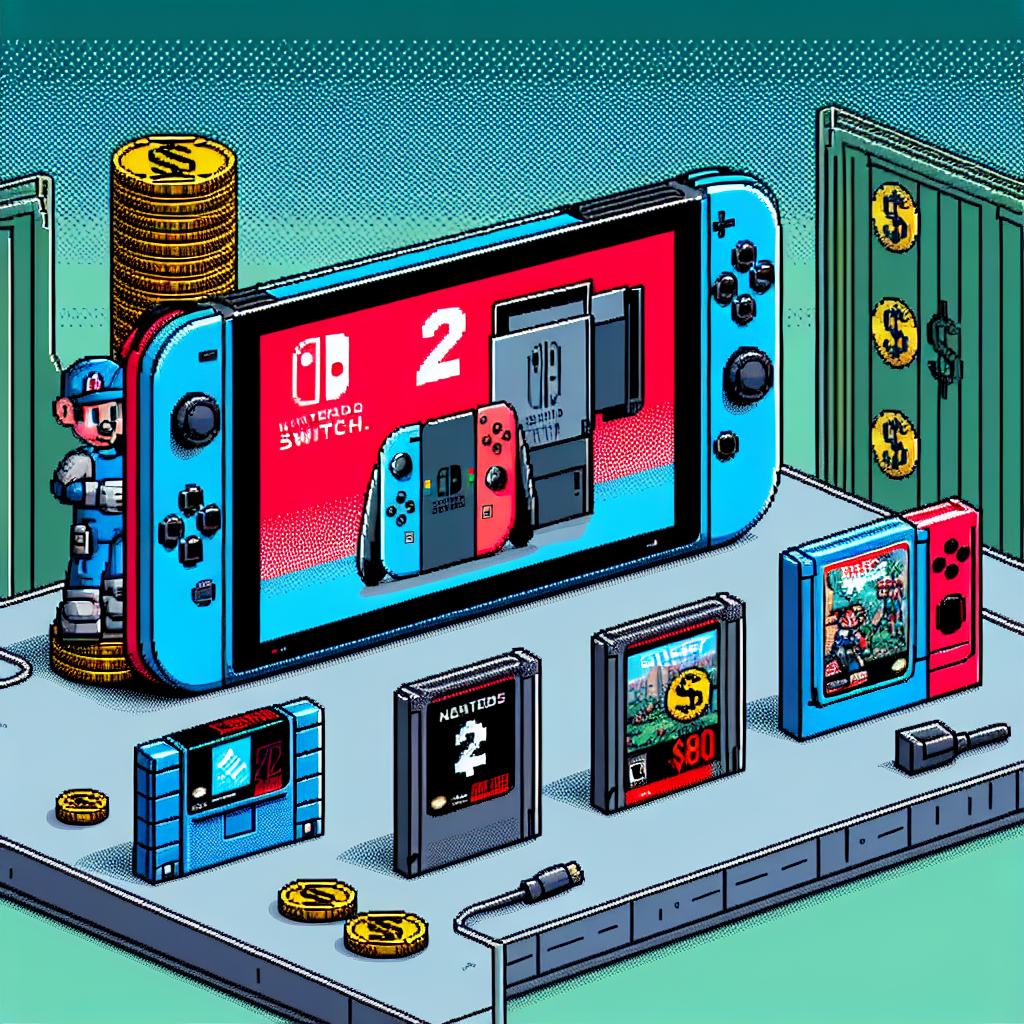Nintendo Switch 2 Flips The Switch On $80 And $90 Games - Forbes | Analysis by Brian Moineau
Title: Nintendo Switch 2: Flipping the Script on Gaming Prices
Nintendo has always been a name synonymous with nostalgia, innovation, and family-friendly fun. From the days of the NES to the revolutionary Wii, and now to the versatile Switch, Nintendo has consistently reinvented itself to stay at the forefront of the gaming world. However, with the announcement of the Nintendo Switch 2 and its pricing strategy, it seems the company is making another bold move—this time with game pricing.
Sticker Shock or Strategic Shift?
The news that "Mario Kart World" is being listed at $80 on Nintendo’s website and other storefronts pricing digital copies at 80€ and physical ones at 90€ might have caused a double-take among fans. But is this really a surprise? The gaming industry has been inching towards higher price points for a while now. Sony and Microsoft have already set a precedent with some of their AAA titles priced at $70. As development costs rise and games become more immersive and complex, it seems inevitable that prices would follow suit.
Why the Price Hike?
There’s no denying that developing games today is an expensive affair. With the demand for high-quality graphics, expansive worlds, and engaging storylines, the resources required have skyrocketed. The Switch 2, with its rumored enhanced capabilities, could be a game-changer (pun intended) in terms of what developers can create, and these advanced experiences don't come cheap.
Moreover, the shift towards digital purchases has changed the landscape. Physical copies have traditionally been priced higher due to production costs. With digital platforms gaining traction, this pricing model is being reevaluated. Interestingly, the physical copy of "Mario Kart World" is priced higher, possibly to reflect the continued costs associated with producing cartridges.
Global Pricing Trends and Consumer Behavior
This pricing model also reflects broader global trends. Inflation and currency variations mean that prices can differ significantly across regions. The U.S. might see an $80 game, while the same game in Europe might cost 80€, accounting for these economic differences. It’s a delicate balance between covering costs and remaining accessible to a global audience.
Additionally, Nintendo's move could be seen as testing the waters. With a loyal fan base and a proven track record of delivering quality, the company might be gauging consumer willingness to pay premium prices for premium experiences. It's a risky strategy, but if anyone can pull it off, it's Nintendo.
The Bigger Picture
Beyond the gaming world, this shift in pricing reflects a broader trend of increasing costs in entertainment. The film industry, for example, is seeing similar trends with blockbuster movies and streaming services offering exclusive, high-budget content at a premium. As entertainment becomes more immersive, the cost of creating these experiences inevitably rises.
Final Thoughts
While the initial reaction to Nintendo's pricing strategy for the Switch 2 might be one of shock, it's important to view it in the context of industry-wide trends and the evolving nature of entertainment. Nintendo has always been a trendsetter, and this could very well be another step in reshaping the gaming landscape.
For gamers, the question remains: is the experience worth the price? Only time will tell if Nintendo's gamble pays off. But one thing is for sure, in the world of gaming, change is the only constant, and Nintendo is once again at the forefront, flipping the switch on traditional pricing models.
As we eagerly await more details and the eventual release of the Switch 2, it's a reminder that in gaming, as in life, innovation often comes with a cost. Let’s hope it’s a price worth paying for the adventures that await.
Read more about AI in Business




